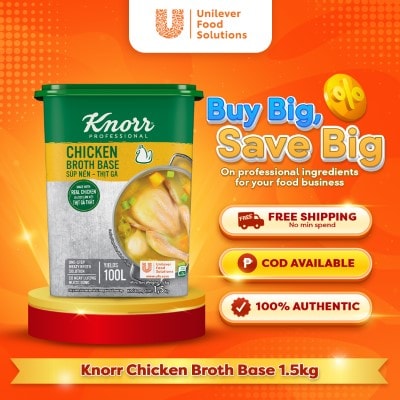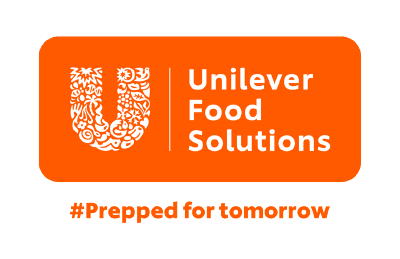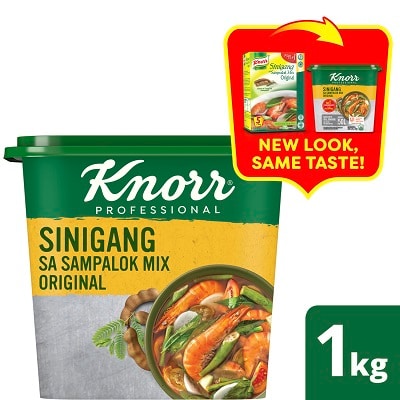Thriving in the competitive F&B industry takes more than determination and hard work. It demands bold, out-of-the-box thinking that sets your business apart. Outpacing the competition or riding trends won’t cut it anymore. You need game-changing food innovation ideas to elevate your offerings and capture your customers’ attention.
Ready to transform your menu and lead the pack? Here are some innovative ideas for food businesses to kick-start your success.
What Is Food Innovation?
Food innovation is the creative process of developing and refining food products, production methods, and packaging to meet evolving consumer demands. It can involve crafting healthier, more nutritious options, exploring sustainable solutions, and introducing unique offerings that cater to modern lifestyles.
With advances in technology, the possibilities for food innovation have expanded dramatically. Healthier alternatives are taking center stage, with ingredients like cannabis, mushrooms, prebiotics, and probiotics incorporated into everyday products. As veganism and vegetarianism gain popularity, innovative meat alternatives are transforming the market. Cutting-edge developments, like in-vitro meat, showcase how science is revolutionizing what’s served on plates.
Why Is Food Innovation Important?
Food innovation ensures growth and survival. It drives creativity and keeps your business relevant in a dynamic market.
Food innovation ideas can help you:
● Get ahead of industry trends: Stand out by offering innovative food products and experiences that attract and retain customers.
● Drive business growth: Unique food product ideas open untapped markets and revenue streams, enabling your business to expand and scale effectively.
● Adapt to consumer demands: As preferences evolve, food innovation ensures businesses can meet demands for healthier, more sustainable, and diverse food options.
● Improve brand reputation: Embracing innovation showcases your commitment to progress and quality, building trust and loyalty among customers.
● Address environmental issues: By creating sustainable products and production methods, businesses can appeal to eco-conscious consumers and contribute to a healthier planet.
● Promote health and wellness: Developing nutritious and functional food products aligns with the increasing focus on health-conscious lifestyles.
Food Innovation Ideas to Transform Your Business
Ready to ride the wave of innovation? Discover exciting food trends and product ideas to captivate your customers and drive sustainable success.

1. Health-centric initiatives
As health awareness rises, consumers are seeking natural ingredients that support immunity and overall well-being. For inspiration, Algama, a Paris-based food tech company, transforms microalgae into a sustainable, protein-rich food source. Their product, Springwave, is a spirulina-based drink packed with vitamins and health benefits.

2. Plant-based meat
As consumers prioritize health and sustainability, the demand for plant-based meat alternatives continues to rise. Why not swap out traditional meats for these innovative options? From vegan lechon crafted from soy, tapioca, and mushrooms to plant-based burgers and fillets, these delicious alternatives are gaining traction with vegetarians and meat lovers alike.

3. Nutraceuticals
With consumers increasingly focused on healthy eating, nutraceuticals are making their mark. Functional foods, supplements, and gut health products are gaining popularity for their potential to address conditions like allergies, diabetes, and immune diseases.
Farmhand Organics, a US-based FoodTech startup, offers plant-based, probiotic-rich foods like krauts and kimchi. Sourced from local family farms, their products promote digestion, sleep, and immunity while reducing carbon footprints.

4. Purposeful snacks
As busy lifestyles continue to rise, nutritious snacks have become essential for fueling people between meals. Companies like Better Snacks are leading the way by transforming vegetables and wholesome ingredients into crave-worthy, plant-based chips and crisps. These innovative food products make healthy eating accessible and delicious.

5. Invisible barcodes and blockchain
Increased scrutiny on food and meat manufacturing has driven demand for greater transparency. Technologies like blockchain and invisible barcodes track products and ensure food safety.
For example, Nestlé uses blockchain for its Zoégas coffee brand, allowing consumers to trace the journey of coffee beans with a QR code. This traceability provides details like harvest time, farmer information, and roasting periods. These technologies help reduce waste, improve transparency, and give consumers more insight into the products they buy.

6. Ghost kitchens and cloud kitchens
Ghost and cloud kitchens offer a low-cost, low-risk alternative to brick-and-mortar establishments, allowing businesses to expand quickly with minimal investment. These kitchens enable multiple brands to operate from a single space, maximizing efficiency and reducing waste by using shared ingredients. If you're testing new concepts or need private kitchen space, ghost kitchens could be a viable option.









7. Food waste reduction innovations
Food waste remains a significant industry issue, with 1.3 billion tons wasted annually, 70% of which occurs before reaching the consumer. Restaurants contribute to around 40% of this waste, affecting profits, food security, and the environment. However, innovations are emerging to tackle this challenge.
Technologies like food waste digesters and dehydrators are helping restaurants minimize waste sent to landfills. Digesters break down food waste using biological additives, while dehydrators reduce volume and weight through mechanical and thermal methods.
Additionally, solutions like Safe Traces provide transparency by tracking food's journey, helping producers tackle waste by identifying issues early in the supply chain. Zest Labs offers sensors that monitor harvest quality and aging rates to predict shelf life, enabling better freshness management in restaurants.
8. Functional beverages
Health-boosting drinks are also taking center stage, with consumers craving beverages packed with probiotics, adaptogens, and vitamins. This healthy food innovation idea allows customers to boost their wellness with every delicious sip – without the guilt.
9. Upcycled ingredients
Upcycled ingredients repurpose and add value to food by-products. Some product innovation examples include fruit pulp transformed into smoothies and spent grains turned into bread. These ingredients allow businesses to create sustainable, eco-friendly dishes, attracting customers who value sustainability.
10. 3D food printing
3D printing lets chefs craft intricate, customized food designs in a snap. This innovation leads to boundless possibilities for new food product ideas and visually stunning dishes, from personalized desserts to intricate garnishes.
11. AI-driven menus
AI can customize menus based on customer preferences, dietary needs, and purchase history. You can also use AI to create personalized experiences that promote healthier choices and boost customer loyalty. This technology can even help you adapt offerings in real time, staying ahead of trends and driving repeat visits.
12. Edible packaging
Edible packaging made from seaweed, rice, and other sustainable materials offers a solution to plastic waste. These biodegradable alternatives reduce environmental impact while providing a fun and functional experience for customers.
13. Robot-assisted cooking
Have you ever imagined robots manning your BOH? Robots are now revolutionizing food prep by automating repetitive tasks like chopping, stirring, and frying. These robotic chefs increase kitchen efficiency, reduce labor costs, and maintain consistency in food quality. More advanced models can even handle complex cooking techniques, freeing up chefs to focus on creativity and customer service.
14. Lab-grown meat
Lab-grown meat, produced through cellular agriculture, provides a sustainable alternative to traditional meat. This innovative food product delivers the same taste and texture without the ethical concerns tied to animal farming. It’s a viable option for meat-lovers who are mindful of their environmental impact and animal welfare.
15. Vertical farming
Vertical farming maximizes space by growing crops in stacked layers, enabling year-round production in urban areas. This innovation shields crops from weather challenges like droughts or typhoons. It also allows businesses to offer ultra-fresh, locally grown produce while reducing transportation costs and minimizing their carbon footprint.
The food industry is always evolving, offering exciting opportunities for businesses. Step beyond your comfort zone and explore innovative food ideas to stay ahead of trends, optimize your menu, and meet customer demands. To discover more ideas that keep your brand top of mind, download the Future Menus report today.







